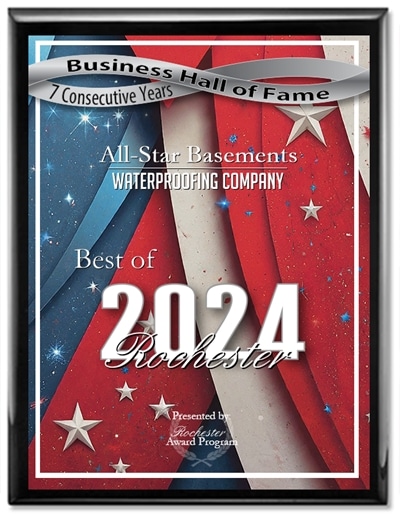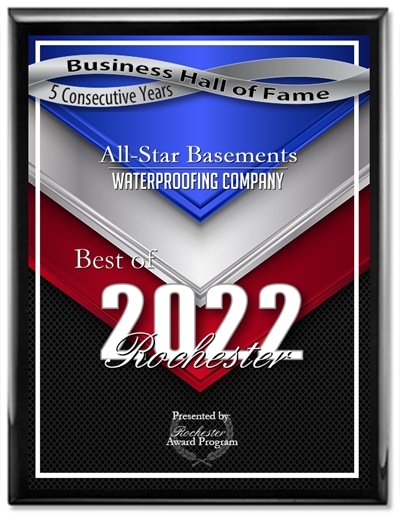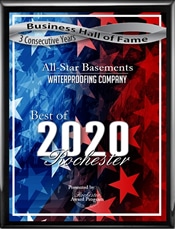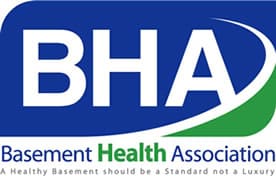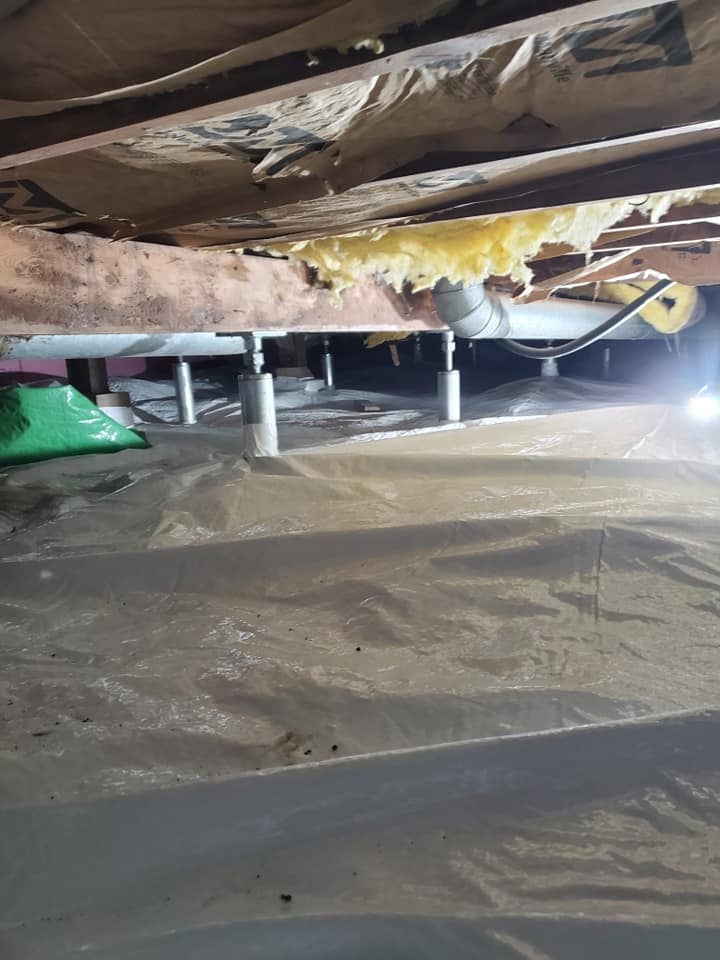
Embarking on the journey of home maintenance often involves tending to the visible aspects—the pristine facade, well-manicured lawns, and meticulously decorated interiors. Yet, beneath the surface, in the often-overlooked realm of the basement crawlspaces, lies a crucial battleground for the structural integrity and energy efficiency of your home.
Crawlspace waterproofing isn’t just a safeguard to protect against moisture intrusion; it’s a strategic maneuver that holds the key to unlocking substantial energy savings. As we delve into the multifaceted relationship between crawlspace waterproofing and energy efficiency, it becomes apparent that this endeavor transcends mere structural preservation; it’s a pivotal step toward creating a resilient, energy-conscious home.
The Crucial Role of Crawlspace Waterproofing: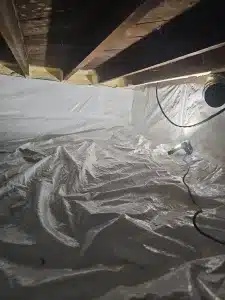
Picture this: a torrential downpour outside, and unbeknownst to you, moisture steadily infiltrating the very same foundation walls of your home through the oft-ignored crawlspaces. Herein lies the crux of crawlspace waterproofing—the proactive defense against the insidious encroachment of water that could wreak havoc on your home’s foundation and compromise its structural integrity.
Beyond the immediate threat to the physical structure, damp crawlspaces breed a host of secondary issues—mold and mildew colonization, potential health hazards, and compromised air quality. Regular crawlspace inspection and waterproofing become a non-negotiable aspect of home maintenance, emerging as a vigilant guardian against these clandestine threats.
Overlooked Marvels: Crawlspaces and Energy Efficiency:
The narrative, however, doesn’t end with structural concerns. Crawlspaces, a space often relegated to the shadows of homeownership, possess an innate power to influence the energy efficiency of your dwelling. These seemingly unremarkable spaces, characterized by darkness and dampness, harbor a paradox—they are both overlooked and essential.
Crawlspaces serve as conduits for vital home systems, such as plumbing and electrical, underscoring their significance. Unattended, these crawl spaces become breeding grounds for mold, mildew, and other moisture-related issues, posing a threat not only to the structural integrity of your home but also to the delicate balance of energy consumption.
Unpacking the Nexus Between Crawlspace Waterproofing and Energy Efficiency:
The interplay between crawlspace conditions and energy efficiency is intricate, a dance that impacts the very rhythm of your home’s energy consumption. Uninsulated or poorly insulated crawlspaces, as highlighted by the Department of Energy, can contribute significantly to a home’s energy loss—up to 30%, a statistic that underscores the urgency of addressing this often-neglected crawl space side.
The consequences extend beyond mere financial implications, delving into the realms of indoor air quality, respiratory health, and the overall harmony of your living environment. Mold and mildew, fostered by damp crawlspaces, become silent infiltrators, compromising not only the physical floor structure but also the very air you breathe.
Array of Crawlspace Waterproofing Methods:
Addressing the dual challenge of moisture intrusion and energy inefficiency demands a diverse toolkit. Enter the array of crawlspace waterproofing methods, each a tailored response to the unique needs of your home. From the installation of polyethylene vapor barrier barriers to the meticulous sealing of walls and the strategic deployment of sump pumps and drainage systems, homeowners are presented with a spectrum of solutions.
Specialized products—encapsulation liners, vapor barriers, and drainage tiles—add layers of sophistication to the waterproofing arsenal. This diverse array emphasizes the need for a nuanced approach, recognizing that the solution lies in the careful calibration of methods to suit the severity of existing ground moisture problems.
Navigating the Decision-Making Process:
Choosing to install the right crawlspace waterproofing method is akin to charting a course through uncharted waters. Professional guidance becomes paramount, particularly when confronted with significant leaks or standing water issues. The decision-making process involves a meticulous consideration of the unique circumstances of your home, ensuring that the selected solution aligns seamlessly with its specific needs.
As we navigate this intricate landscape where moisture meets energy efficiency, it becomes increasingly clear that crawlspace waterproofing is not just a reactive measure—it’s a strategic investment in the longevity, resilience, and energy efficiency of your home.
In the subsequent sections, we unravel the layers of benefits that extend beyond moisture prevention, exploring how crawlspace waterproofing becomes a transformative force in enhancing energy efficiency, resulting in tangible and sustainable savings on energy bills. From the encapsulation of crawlspaces to the protection of ductwork, each facet adds a chapter to the narrative of a home that not only withstands the test of time but does so with a conscious eye on energy conservation.
Deeper Dive into Energy Efficiency Benefits:
As we embark on a deeper exploration of the symbiotic relationship between crawlspace waterproofing and energy efficiency, a rich tapestry of benefits unfurls. Beyond the immediate preservation of structural integrity and prevention of moisture-related issues, crawlspace waterproofing emerges as a transformative force with profound implications for your home’s energy consumption and, consequently, your utility bills.
1. Encapsulation for Insulation:
Encapsulation, a cornerstone of effective crawlspace waterproofing, transcends its primary role as a moisture deterrent. By closing off the crawlspace from the external environment, encapsulation acts as an additional layer of insulation. This not only shields the home from the ingress of external air but also prevents the escape of conditioned air from within the crawl spaces. The result is a more controlled indoor environment that demands less energy for heating in the winter and cooling in the summer.
2. Humidity Reduction:
Crawlspace waterproofing becomes a dynamic ally in the battle against humidity. By impeding water seepage, minimizing condensation, and promoting proper ventilation, this process directly contributes to reduced humidity levels within the home. High humidity places added strain on HVAC systems, compelling them to work harder to maintain a comfortable indoor climate. Through moisture mitigation, crawlspace waterproofing alleviates this burden, resulting in decreased energy consumption and, consequently, lower energy bills.
3. Ductwork Protection:
Consider the intricate network of ductwork, often running through the crawlspace, as the circulatory system of your home’s heating and cooling apparatus. Waterproofing this ductwork stands as a strategic move to preserve its efficiency and, by extension, enhance overall energy efficiency. The enveloping effect of waterproofing protects the ductwork from exposure to external temperature extremes. This, in turn, minimizes energy loss, translating into substantial savings on your energy bills.
4. Preventing Water Damage:
Beyond its role in energy efficiency, the waterproofing of crawlspaces safeguards critical components such as ductwork from water damage. Water infiltration into ducts can lead to rust development on metal surfaces, compromising structural integrity. Additionally, the growth of mold in damp environments poses health risks for occupants. The preventive measures taken during crawlspace waterproofing serve as a bulwark against these potential issues, ensuring both the longevity of your home systems and the well-being of its inhabitants.
5. Enhancing System Lifespan:
Crawlspace waterproofing, particularly concerning ductwork, transcends immediate energy savings; it becomes an investment in the longevity of your home’s systems. Water damage, left unchecked, can precipitate structural issues, leading to costly repairs or even system replacement. By fortifying your home against water intrusion, you extend the lifespan of critical components, ensuring they function optimally for years to come.
The Multifaceted Benefits of Ductwork Waterproofing:
1. Preventing Water Damage:
The intricate network of ductwork that weaves through the recesses of your home serves as the circulatory system for heating and cooling. However, it is also vulnerable to water damage, which can have cascading effects on both the structural integrity of the system and the quality of indoor air. Leaks in the roof or walls, condensation accumulation, or floods can all introduce water into the ducts, initiating a chain reaction of problems. Metal ducts are susceptible to rust, leading to structural damage and eventual system failure. Additionally, the presence of moisture fosters an environment conducive to mold growth, posing health risks to the occupants. Ductwork waterproofing acts as a formidable barrier, preventing water from infiltrating and causing these potentially severe issues.
2. Improving Energy Efficiency:
Waterproofing the ductwork isn’t just about averting water-related problems; it also contributes significantly to improved energy efficiency. When insulation surrounding ducts becomes wet, it loses its effectiveness. Wet insulation increases energy usage, as the heating and cooling systems must work harder to compensate for the compromised insulation. By keeping the insulation dry through waterproofing, you ensure that it retains its optimal performance, reducing energy waste and, consequently, lowering your utility bills.
3. Extending System Lifespan:
Water damage can be insidious, silently compromising the structural integrity of the ductwork. Over time, this structural compromise can lead to costly repairs or even the premature replacement of the entire system. Ductwork waterproofing acts as a proactive measure to extend the lifespan of this critical home component. By shielding the ducts from water intrusion with waterproof them, you mitigate the risk of structural damage, ensuring that your heating and cooling systems function optimally for an extended period.
4. Preserving Indoor Air Quality:
The presence of water in ductwork not only poses structural threats but also jeopardizes indoor air quality. Damp environments within the ducts become breeding grounds for mold, a known allergen that can lead to respiratory issues and other health concerns. Waterproofing the ductwork is an essential step in preserving indoor air quality by eliminating the conditions conducive to mold growth. This, in turn, contributes to a healthier living environment for you and your family.
5. Reducing Maintenance Costs:
Water-related damage to ductwork can necessitate frequent and costly maintenance. Rust on metal ducts, compromised insulation, and mold growth all demand attention, leading to a continuous cycle of repairs. Waterproofing the ductwork, while initially an investment, pays dividends in reduced maintenance costs over the long term. By preventing water-related issues, you minimize the need for frequent repairs and replacements, translating into sustained savings in both time and money.
The Impact on Energy Bills: A Compelling Case for Professional Assistance:
As we unravel the layers of benefits that emerge from meticulous crawlspace waterproofing and ductwork protection, it becomes evident that the ramifications extend far beyond the immediate preservation of structures and systems. At the heart of this transformative process lies a compelling case for the optimization of energy efficiency, translating into tangible and sustained reductions in energy bills. Yet, to harness these benefits to their fullest extent, the indispensable role of professional assistance comes into sharp focus.
1. Strategic Investment in Energy Efficiency:
Crawlspace waterproofing, encapsulation, and ductwork protection collectively form a strategic investment in the energy efficiency of your home. The controlled environment created by these measures reduces the strain on heating and cooling systems, minimizing the energy required to maintain a comfortable indoor climate. This strategic approach translates into a more economical use of energy resources, directly impacting the bottom line of your energy bills.
2. Holistic Savings Through Encapsulation:
The encapsulation of crawlspaces stands as a holistic measure that not only prevents moisture-related issues but also adds an additional layer of insulation to your home. By sealing off the crawlspace from external elements, crawl space encapsulation curtails the loss of conditioned air, reducing the need for excessive heating in winter and cooling in summer. The result is a direct and measurable impact on energy bills as your HVAC systems operate more efficiently within a controlled environment.
3. Optimized HVAC Efficiency:
Ductwork protection, another facet of the energy efficiency equation, ensures that your home’s heating and cooling systems operate at peak efficiency. Waterproofing ducts not only preserve their structural integrity but also safeguard the insulation surrounding them. Dry insulation translates into optimal thermal performance, minimizing energy waste and enhancing the overall efficiency of your HVAC systems. This, in turn, contributes to lower energy consumption and, consequently, reduced energy bills.
4. Professional Precision for Maximum Impact:
While the cost benefits of crawlspace waterproofing and ductwork protection on energy bills are clear, their realization hinges on precision in execution. Professional assistance becomes not just an option but a prerequisite for ensuring that these measures are implemented meticulously and in alignment with the unique characteristics of your home.
Experienced professionals bring a nuanced understanding of the crawl space walls’ interplay between moisture control, insulation, and system efficiency. They tailor the waterproofing process to the specific needs of your crawlspace, accounting for its size, condition, and potential vulnerabilities. This level of expertise ensures that the encapsulation and ductwork protection are not only effective in preventing issues but also optimized for energy efficiency.
Unveiling a Holistic Solution for Homeowners:
In conclusion, crawlspace waterproofing emerges as a holistic solution that extends beyond the prevention of moisture-related issues. When executed meticulously, it becomes a powerful instrument for improving a home’s energy efficiency, resulting in tangible and sustainable savings on energy bills. From encapsulating crawlspaces to protecting ductwork, the multifaceted benefits underscore the importance of this process in maintaining a secure, healthy, and energy-efficient home.
Contact the Professionals at All-Star Basements Today! 507-259-7776

All-Star Basements is Locally Owned and Operated and based out of Rochester, Minnesota. We cover Southern Minnesota including the Twin Cities area, Western Wisconsin and parts of Northeast Iowa. Our team is committed to solving our customers’ basement waterproofing, foundation repair, or crawl space needs and offering multiple solutions to choose from.
As a proud member of the Basement Health Association and the National Waterproof Members of America, we have the best products available to solve your leaky basement, seepage, or flooding issues. Our lineup also includes multiple crawl space solutions.
If you have foundation problems that need any kind of repair, we can help! We feature the nationally renowned Grip-Tite Foundation Systems, which has a long history over 90 years of fixing homeowners’ foundation repair issues- from walls that are buckled, tipping or cracked and bowing.
At All-Star Basements, we are committed to providing multiple solutions to choose from to help fix any basement problem you may have. We are very proud of our Better Business Bureau A+ rating and take great pride in caring for all of our customers’ needs- big or small, we do it all!
